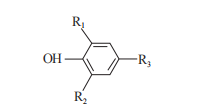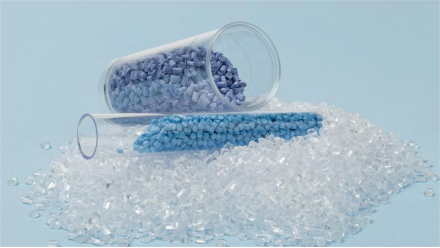Address:Room 906, building 6, SIIC Center, No.195 Hong Kong East Road, Laoshan District, Qingdao city, Shandong Province, China
E-mail:info@deltachem.net
Hindered phenolic antioxidants are compounds that have substituents on one or both sides of the hydroxyl group of the benzene ring. According to the number of hindered phenolic functional groups in its molecule, it is generally divided into mono-hindered phenolic and polyhindered phenolic.

Structure schematic of the hindered phenolic antioxidant

v What is the mechanism of polymer aging? How do hindered phenolic antioxidants works in polymer system?
In the process of use or storage, due to heat, light, ozone oxidation, or metal ion catalysis, polymers undergo a degradation reaction. Then product’s properties are reduced, like discoloration, sticky, hard brittle, crack, etc., resulting in the loss of use value.
In the radical chain oxidation of polymer, hindered phenolic antioxidant provides protons to form phenolic oxygen free radicals. Because the free radicals form a conjugate system with the benzene ring, it is stable and has low activity, which can slow down the oxidation induction processing. At the same time, the phenol oxygen radical also has the ability to capture free radicals, which can terminate the oxidation chain reaction.
v Do you know the main types and applications of hindered phenolic antioxidants?
ü Mono-phenol antioxidant
Mono-phenol antioxidant only have one hindered phenolic unit. It’s usually anti-coloring and no pollution. But its molecular weight is small, easy to volatile, so that the antioxidant effect will be reduced. It can only be applied to systems that do not require high weather resistance.
Product name | Key benifits | Application |
OMNISTAB AN1076 | Excellent compatibility with most polymer materials, low volatility, good precipitation resistance. | PP, PE, PVC, PA, ABS, PS, PVC, SBS, PU, PET, PMMA... |
OMNISTAB AN1135 | High activity liquid hindered phenolic antioxidants with good dispersion. | PUR, PMMA, PVB, coatings, and adhesives... |
OMNISTAB AN565 | Suitable for the processing of unsaturated rubber. It’s effective in stabilizing the therm-oxygen aging and degradation of elastomer, could prevent the gel phenomenon. | SBS, SIS, TPE, BR, SBR and other rubber |

ü Bis-phenol antioxidant
Bis-phenol antioxidants refer to phenolic antioxidants that directly link two hindered phenolic units with alkyl or sulfur bonds.
Compared with monophenol type, bisphenol type has higher molecular weight which enhance its thermal stability, so it has better anti-aging effect.
Product name | Key benifits | Application |
Belongs to thio-hindered phenolic antioxidant, provides processing stability for polymers. It’s widely used in PE wire and cable. | PP, HDPE, PUR... | |
OMNISTAB AN1024 | A metal passivator that has the dual functions of anti-oxidation and metal deactivation. | PE, EVA, PVC... |
ü Poly-phenol antioxidant
Poly-phenol antioxidants contain more than two hindered phenolic units in their molecular structures.
Product name | Key benifits | Application |
OMNISTAB AN1010 | High effective hindered phenolic antioxidant with low volatility and odorless. | PP, PE, PVC, PA, PBT, PET and adhesive... |
Especially suitable for polyolefin products with high requirements for water extraction resistance and discoloring. | PP, HDPE, TPE, ABS, PVC... | |
Its effect is excellent in polyolefin. AN3114 has synergistic effect with UV absorbers or phosphite esters. | PP, PE, ABS, Rigid PVC... |
v Guidelines for the use of hindered phenol antioxidants
Synergistic effect will obtained, when hindered phenol antioxidants are used in combination with phosphite ester or thioester antioxidant!
As we all know, hindered phenolic antioxidants act as chain terminators by trapping free radicals. However, hindered phenols cannot decompose hydro-peroxides, that’s why they often need to be used with auxiliary antioxidants( such as phosphite esters or thioesters) and HALS.